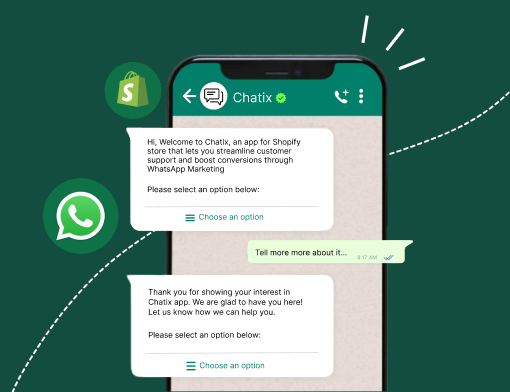
Abandoned cart vs abandoned checkout
Published: February 08, 2024
As an e-commerce store owner or marketer, nothing can be more frustrating than seeing website traffic go up, but sales and conversion rates are not. This is the most common problem in the e-commerce world.
If you invest lots of resources in making your website better than competitors, branding, and marketing to draw customers to your site and improve their shopping experience, but they abandon the cart or leave the site before checkout just because you don’t provide them with multiple payment options, discounts, or fast shipping.
If your sales stink and it seem to get worse every year, it’s time to recover those sales and lower cart abandonment.
However, this guide covers everything you need to know about the key difference between abandoned carts and checkout, how to calculate their rates, and how to prevent them.
Difference between abandoned cart vs abandoned checkout

Nothing can be more disgusting for an e-commerce business than knowing that a customer liked the product, almost completed half of the process, but suddenly disappeared at the last stage without purchasing a product.
Both are stages of the user buying journey at which users abandon the purchasing process midway before completing it. The definitions of the abandoned cart and abandoned checkout look identical but vary from each other.
Customers abandon their decision to buy something online after encountering friction in their online shopping experience; therefore, examining the root causes and fixing both cart and checkout abandonment problems can be crucial for an eCommerce business as it causes lost sales and decreased revenue.
Let’s dive into the details and understand the difference between these two types of abandonment.
What is cart abandonment?
Simply put, when visitors explore online stores intending to buy something online, they add an item to their cart but leave without making a purchase. It typically occurs before the checkout process is initiated.
If we look at the data, 80% of online shopping orders were abandoned, and luxury and fashion businesses face approximately 88% of cart abandonment—the highest rate among all industries.
An average cart abandonment rate can be calculated by dividing the total number of successful transactions by the total number of initiated carts. The following equation can be used to calculate the actual rate:
Cart abandonment rate = 1 minus (total number of completed transactions / total number of initiated carts) X 100
Since the cart stage comes before the checkout stage, it is common to see a larger number of customers starting the cart stage. As a result, the cart abandonment rate is usually higher compared to the checkout abandonment rate.
What is checkout abandonment?
Checkout abandonment is when shoppers begin the product checkout process and add their personal and financial details but drop off before the finish line.
Studies say that less than 60% to 80% of customers abandoning checkout is normal. Ensuring a good relationship between customers and your brand, regular engagement, and easy navigation helps lower your checkout abandonment rate.
An average checkout abandonment rate can be calculated by dividing the total number of successful transactions by the total number of initiated transactions. The following equation can be used to calculate the actual rate:
Checkout abandonment rate = 1 minus (total number of completed transactions/total number of started transactions) X 100.
Losing customers during checkout—the last stage of an e-commerce customer journey—when they're close to the finish line can be extremely disheartening. However, a rising or high abandonment rate leads to long-term issues if they can’t be addressed quickly.
Why do shoppers abandon the cart and checkout processes?
Understanding buyers' journeys and improving their purchasing experience is the most essential thing you can do to improve sales and conversions. Complexity while navigating your website and several factors can influence a user’s decision to abandon at both stages.
The following are some of the most common causes of cart and checkout abandonment that can make users break the buying journey.
Unexpected fees: Additional or added fees like increased shipping costs, taxes, and packaging charges are hands down the biggest dealbreakers. This can make customers think again about purchasing an item. And no business wants users to abandon their cart or payment process.
Website speed: 57 percent of customers abandon if they have to wait more than three seconds to load the page. Slowing website speed can make users frustrated and affect their desire to buy. Moreover, website crashes and errors can also contribute to checkout abandonment.
Security concerns: If a customer suspects that their financial or personal details are unsafe, they will likely bounce from the website before purchasing the product. A lack of security measures can negatively affect the shopping experience of customers. Remember, first-time buyers may not wish to disclose their details, like name, email, and phone number, or allow the company to store their credit card information.
Lack of payment options: Most customers will abandon the checkout stage if an online store doesn’t accept multiple payment methods like credit or debit cards. Limited payment methods or not having a preferred payment option negatively impact international transactions.
Complicated checkout process: A long and overcomplicated payment process can upset users and prevent them from becoming your customers. One study found that 28% of visitors left the website due to a complicated checkout process.
Suggesting customers add more items to the cart: Forcing customers to add more items to the cart can result in losing their faith in the checkout process because it looks more promotional and annoying.
Unsatisfactory return policy: Before looking to buy any product, customers look for a return and cancellation policy. A satisfactory return policy can result in cart abandonment.
Design-related issues: A well-crafted website UI design is an essential step in enhancing the user experience. The complex design of the checkout process itself can impact abandonment rates.
Account creation requirements: Requiring shoppers to create an account before completing a purchase can be a deterrent. Many customers prefer a fast and friction-free checkout experience, and being asked to create an account can be seen as an unnecessary hassle.
Transparency issue: Transparency issues such as long delivery times, additional costs, expensive shipping options, or a lack of clarity about policies can contribute to cart abandonment.
10 Tips to prevent cart and checkout abandonment?
Even e-commerce giants like Amazon and IKEA can achieve a 0% cart abandonment rate or checkout abandonment rate because various factors influence users’ buying decisions.
Now let’s learn the ways to optimize the customer shopping experience, recover lost sales and revenue, and sustain ROI
1. Get clear on extra costs.
One of the top reasons that triggers cart abandonment is extra costs.
If users are happy with the price of the product displayed on the website, but when they go through the checkout process, paying more than the product price can surprise them at this critical juncture in the sales funnel.
Showing the actual product price with taxes and shipping charges confuses users and makes them leave the site.
The easiest way to solve this problem is to be transparent about extra costs.
Mention the overall cost with product details or as early as possible, so users can understand exactly how much they would have to pay.
It is not promising, but surely it can decrease the likelihood of abandoning the checkout.
2. Shorten the checkout process
The easier and shorter your e-commerce checkout process, the more likely users are to complete it. It’s better to keep the check-out process between three and five steps because customers don’t have patience.
The checkout process works as a bridge between the customer and order confirmation. Reducing unnecessary fields in a single step makes the process more efficient, which encourages users to complete the purchase and reduces checkout abandonment.
3. Cut the registration step at checkout
As we described above, reducing technical jargon in the customer purchase funnel can accelerate their buying journey.
Forcing users to create an account may work in the services basis or software industries, but for eCommerce businesses, additional steps like registration and sign-in barriers could potentially push customers away.
4. Security is the priority
Your checkout page is the place where users get converted into customers, and you should also think about security measures and protecting their details.
Customers don’t want anyone to misuse their details, especially financial information. So providing high-quality security throughout the payment process will improve users' trust in your brand and make them complete their purchases.
There are many options you can use for security purposes, such as the use of a secure payment system, getting an SSL certificate, showing security symbols or badges on the checkout page, and more.
5. Consider site performance and responsiveness
Your website speed, performance, compatibility in all browsers, and responsiveness on all devices are directly correlated with the customer experience and their buying mindset. The longer users have to wait to move forward with the process of shopping cart creation, the higher the chances of it leading to cart abandonment.
If your website takes longer than usual or fails to load quickly, it will lead them to abandon their carts. So make sure that the server has minimal downtime, the developer has solved all technical problems, and the website is functioning properly without being crashed.
6. Actionable Call to Action in the shopping cart
A strong call-to-action (CTA) plays a vital role in triggering curiosity in users to purchase an item.
Let's assume that users have read your product details and want to buy it. They are still looking for something that inspires them to take action. Guess what can help in this situation? It’s inspiring CTAs.
A call to action can spice up their buying decision and improve the conversion rate. Make sure the CTA for each step is related and use familiar wording; don’t try to be original or curtesy.
7. Create a sales funnel
Every business knows the importance of creating a high-converting sales funnel. From the moment prospects see your product until they make a purchase, they pass through different stages of your sales funnel.
It helps them understand what potential customers are thinking and doing at each stage of the purchasing journey.
These insights help them understand the user’s mindset and decrease the cart abandonment rate.
8. Disclose all details to prevent dropping purchases midway
Whether it could be a return and cancellation policy or delivery time and additional costs, all details should be well-displayed on the screen so users can understand and read them.
It’s not about transparency; it’s about maintaining trust between your brand and customers.
9. Provide multiple payment options
Did you know that 40 percent of shoppers are likely to abandon a purchase because online stores don’t provide multiple payment options to users?
There are several popular payment options customers prefer, such as credit and debit cards, digital wallets, PayPal, installment plans, BNPL (buy now, pay later), and cash on delivery.
Having diverse payment options or allowing payment flexibility is an essential means of attracting more customers.
It is one of the smartest ways to prevent cart and checkout abandonment.
10. Retarget customers to complete purchases
Retargeting or remarketing is one of the favorite strategies of business owners or marketers, as it is a cost-efficient way to attract customers, enhance conversion rates, and maximize the return on investment from your marketing efforts
Retargeting users via emails, WhatsApp messages, and retargeting ads can help you bring users back to your store and finalize abandoned carts or checkouts.
Spending an extra budget on showing retargeting ads to those who have already expressed a genuine interest in your brand can attract their attention again.
Recover lost revenue with the Chatix app
Feeling more stressed watching lost sales or revenue for your Shopify store due to an abandoned cart or abandoned checkout?
Maybe customers found a better product than yours, or you didn’t provide them with a seamless shopping experience. The reason could be anything, but the solution is just one: install Chatix on your website.
Chetix is an app for the Shopify store that provides a live WhatsApp chat feature and helps you with abandoned checkout recovery through WhatsApp.
This app automates all tasks for you; for instance, when users add any item to their cart but leave the site, it sends a “come back” or “remember” message to WhatsApp chat automatically and sends an “offer” message in the second round to gain the user’s attention and improve the retention rate.



